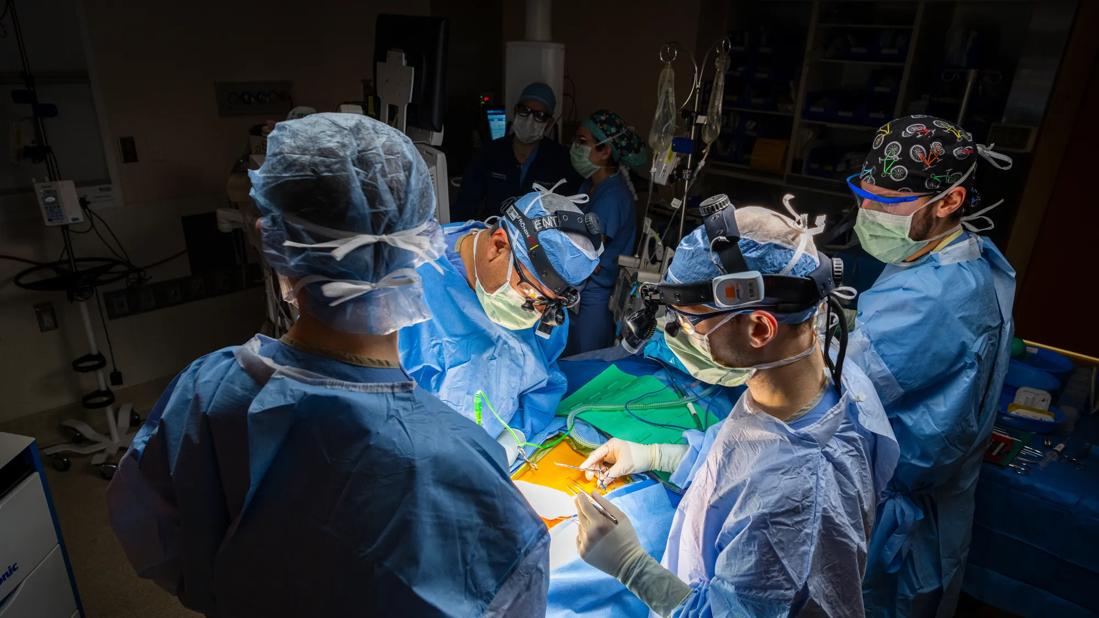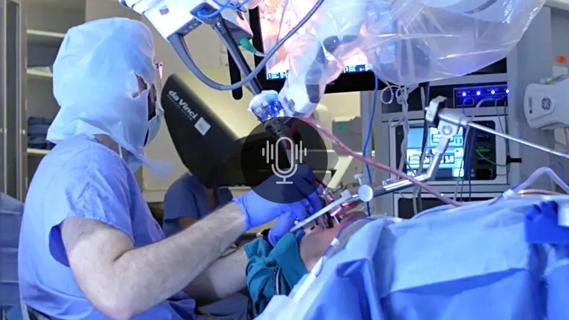Tracking outcomes

Advertisement
Cleveland Clinic is a non-profit academic medical center. Advertising on our site helps support our mission. We do not endorse non-Cleveland Clinic products or services. Policy
The traditional choices for therapy of obstructive sleep apnea (OSA) were expanded in 2014 with the FDA approval of the Inspire® hypoglossal nerve stimulator implant. When considering first-line choices of surgical therapy for those patients who don’t tolerate continuous positive airway pressure (CPAP), the hypoglossal nerve stimulator has changed the conversation about surgical options.
Uvulopalatopharyngoplasty (UPPP) has been the mainstay of treatment for OSA. There have been variations in technique over the years, but the vast majority of surgical therapy in the United States has been soft tissue surgery to the tonsils and palate. Since the onset of our implant program at Cleveland Clinic, the results of surgical obstructive sleep apnea treatment have improved significantly. Likewise, the discussions with patients about which surgical options are available to them and which have the best outcomes have changed considerably.
We have been tracking the outcomes of our hypoglossal nerve stimulation program since its inception four years ago. In 2017 alone, the preoperative apnea-hypopnea index (AHI) dropped from an average of 46 down to 4.6 in 27 patients. This reflects consistent improvement in the patients’ OSA after implantation. We published a paper in 2018 comparing our UPPP results with our implant results. In patients who were matched for AHI, age and body mass index (BMI), hypoglossal nerve implantation was far superior to UPPP.
FDA approval of the Inspire implant was based on the STAR trial published in The New England Journal of Medicine. The STAR trial patients have been followed closely and the five-year follow–up was recently published. This paper showed that the results have been sustainable. Lack of sustainable outcomes has long been a concern with UPPP.
Advertisement
Candidates for hypoglossal nerve stimulation are those patients who have failed or are not candidates for CPAP or a dental device. Other criteria include: age above 22 years old, AHI between 15 and 65 on a recent sleep study, no more than 25 percent central apneas (including mixed), and a BMI of 35 or less. Patients who are candidates for the implant first undergo a drug-induced sleep endoscopy (DISE) to determine the pattern of collapse of the palate. This procedure replicates sleep with an infusion of propofol. Once sedated, we are looking for either a flat, anterior-posterior collapse or a concentric collapse of the palate. The concentric collapse was found to have decreased success after implantation and, therefore, the FDA excluded these patients from eligibility.
Once the DISE is completed and insurance has given approval, the implant can be placed. The surgery is performed as an outpatient procedure. Three areas are approached for implantation. The hypoglossal nerve is exposed just anterior to the submandibular gland. Care is taken to dissect the nerve so that the stimulation electrode is only wrapped around the portion of the nerve that contains the protruser fibers. The pulse generator is placed over the pectoralis major muscle, and a sensing lead is placed between the internal and external intercostal muscles in a lower intercostal space.
The hypoglossal nerve stimulator program is a team effort at Cleveland Clinic. One month after implantation, the device is activated by our sleep medicine colleagues in the Neurological Institute. As the patient gets used to the therapy, its strength is increased over the next month. The patient then undergoes a titration polysomnogram to fine-tune the efficacy of the device.
Advertisement
Uvulopalatopharyngoplasty has been the workhorse of sleep surgery for OSA for decades, but we see hypoglossal nerve stimulation outcomes changing this surgical paradigm.
Alan Kominsky, MD, is board-certified in Otolaryngology and Sleep Medicine. He is Section Head of Surgical Sleep and Snoring in the Head & Neck Institute. He can be reached at 216.444.1948 or kominsa@ccf.org.
Advertisement
Advertisement

A new single-port system well-suited for oropharyngeal cancer treatment

A reduction in the number of incisions for implantation simplifies the procedure and improves patient experience

An answer may be seen by looking at the teeth

How advanced blood testing is changing treatment paradigms

Hearing implant program continues to grow

Study compares hearing aids and combination devices

Patient with cerebral palsy undergoes life-saving tumor resection

Specialists are increasingly relying on otolaryngologists for evaluation and treatment of the complex condition